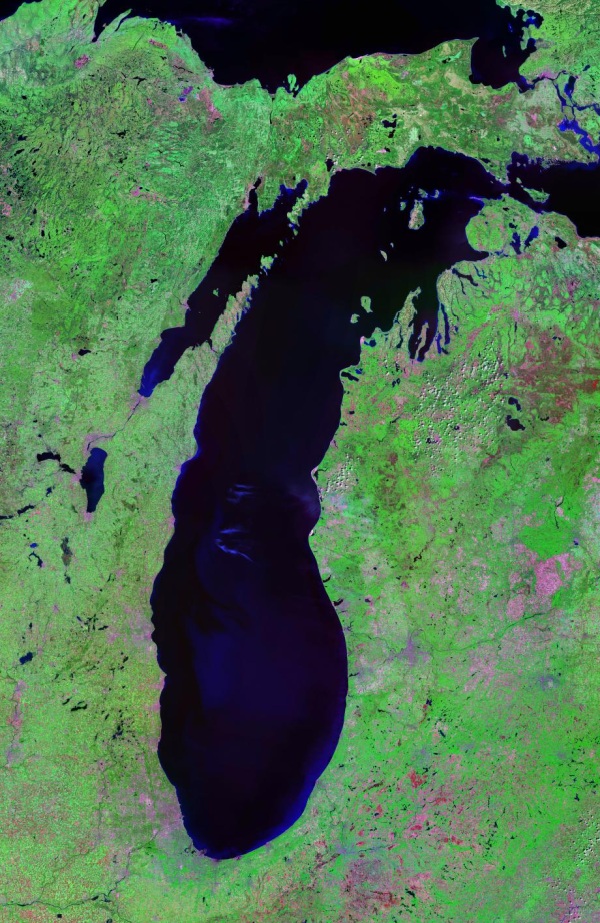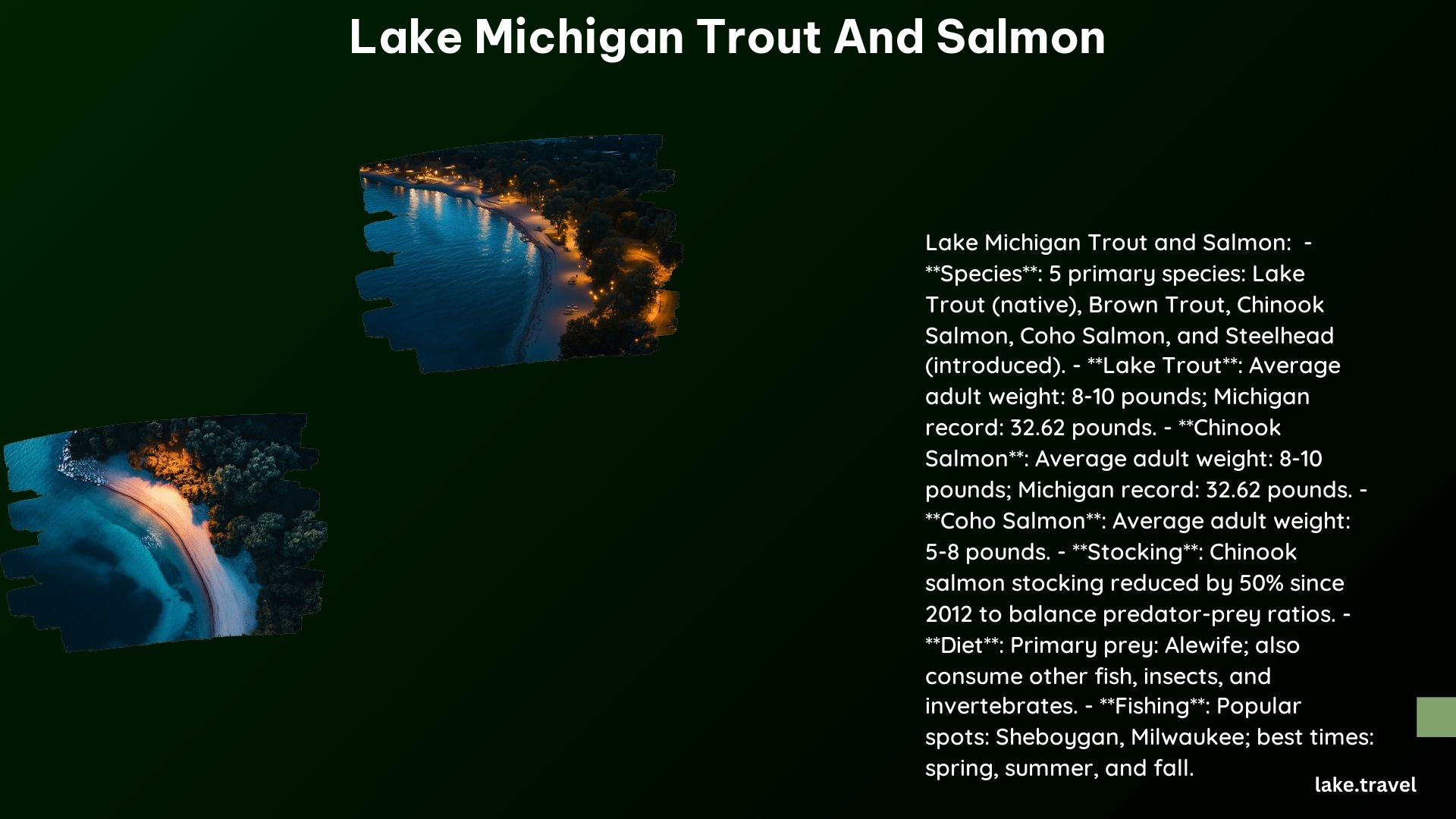Lake Michigan is renowned for its diverse and thriving trout and salmon populations, offering anglers a wide range of species to target throughout the year. From the native Lake Trout to the introduced Chinook and Coho Salmon, this Great Lake provides a unique and exciting fishing experience.
Species Found in Lake Michigan

- Lake Trout (Salvelinus namaycush): Native to Lake Michigan, lake trout were once the primary offshore predator but suffered significant declines due to sea lamprey predation and overfishing. Efforts have been made to restore their populations.
- Brown Trout (Salmo trutta): Introduced to Lake Michigan, brown trout are known for their adaptability and can be found in various habitats, including nearshore structures and warm water discharges.
- Chinook Salmon (Oncorhynchus tshawytscha): Also known as King Salmon, Chinook salmon are native to the Pacific Northwest but were introduced to Lake Michigan. They are a popular species among anglers and are known for their size, with the Michigan record weighing 32.62 pounds.
- Coho Salmon (Oncorhynchus kisutch): Another introduced species, Coho salmon are known for their aggressive fighting and are often targeted by anglers. They are an important part of the Great Lakes salmon fishery.
- Steelhead (Oncorhynchus mykiss): Steelhead are anadromous rainbow trout that migrate from Lake Michigan to its tributaries to spawn. They are highly prized for their fighting ability and flavor.
Primary Feeding Sources

The trout and salmon species in Lake Michigan rely on several key food sources to sustain their populations:
- Alewife (Alosa pseudoharengus): Alewife are a primary food source for many trout and salmon species in Lake Michigan. They were introduced to the lake and have become a crucial part of the food web.
- Round Goby (Neogobius melanostomus): Round gobies are an invasive species that have become a significant food source, particularly for brown trout and lake trout.
- Terrestrial Insects: Steelhead and other species also feed on terrestrial insects, which are abundant near shore and in river mouths.
Impact on Flavor and Edibility
The diet of trout and salmon in Lake Michigan can have a significant impact on their flavor and edibility:
- Alewife Diet: Salmon and trout that primarily feed on alewife tend to have a more neutral flavor profile, as alewife are relatively low in fat and have a mild taste.
- Round Goby Diet: Fish that feed on round gobies may have a slightly different flavor profile due to the goby’s higher fat content and more robust taste.
- Terrestrial Insects: Fish that consume terrestrial insects may have a more varied flavor profile, as these insects can introduce different nutrients and flavors into the fish’s diet.
Fishing Locations and Seasons
Lake Michigan offers excellent fishing opportunities throughout the year, with certain locations and seasons being particularly productive:
- Sheboygan, Wisconsin: Known for its excellent fishing, Sheboygan offers a variety of species throughout the year, including brown trout, lake trout, and salmon. The best times for fishing are early spring and late summer.
- Milwaukee, Wisconsin: Milwaukee provides good fishing opportunities for brown trout, lake trout, and salmon, particularly during the winter and early spring months when fish congregate near warm water discharges.
Conservation Efforts
Fisheries management agencies have implemented several measures to ensure the sustainability of trout and salmon populations in Lake Michigan:
- Fin Clipping: Lake trout stocked into Lake Michigan have been adipose fin clipped since 2011 to help track their populations and distinguish them from naturally reproducing fish.
- Stocking Management: Fisheries management agencies have reduced stocking levels of Chinook salmon by 50% since 2012 to maintain a balance between predator and prey populations.
Additional Information
- Pink Salmon: Pink salmon are not stocked in Lake Michigan, but they were accidentally introduced into Lake Superior in 1956 and have since been found in Wisconsin waters.
- Splake and Tiger Trout: These hybrid species were stocked in Lake Michigan in the past but are no longer part of the stocking program due to poor returns.
References
- Salmon University: Lake Michigan – Salmon University
- Wisconsin DNR: Fishing Lake Michigan trout and salmon?
- Purdue Extension: What’s on the menu for salmon and trout in Lake Michigan?
- Michigan DNR: Know your Great Lakes Trout & Salmon Species
- Michigan.org: 4 Types of Salmon Fishing in Pure Michigan
